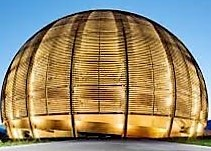Speaker
Description
The r-process has been shown to be robust in reproducing the abundance distributions of heavy elements seen in ultra-metal poor stars. In contrast, observations of elements in the range 36 ≤ Z ≤ 47 display overabundances relative to r-process model predictions [1]. A proposed solution to this discrepancy is an additional source of early nucleosynthesis that preferentially produces the lighter heavy elements; one candidate is the weak r-process in the neutrino driven winds of core collapse supernovae. Which reactions are most important to the weak r-process in moving matter to higher Z number depends on the conditions found in the winds however, models suggest that in the case of slightly neutron rich neutrino driven winds (α,n) reactions are crucial. Models of nucleosynthesis here must depend on Hauser-Feshbach theory for (α,n) cross sections as few have been measured at astrophysically relevant energies (corresponding to temperatures of 2 ≤ T(GK) ≤ 5). Unfortunately, cross section predictions at these energies and within this mass range can vary by up to two orders of magnitude depending on the alpha optical potential used in the calculations [3]. In order to constrain the final abundance predictions of nucleosynthesis in the weak r-process, these reactions' cross sections must be measured [2].
An ongoing experiment at TRIUMF has already used the EMMA recoil separator and the TIGRESS gamma-ray spectrometer to measure the cross section of the reaction 86Kr(α,n)89Sr and plans to measure 94Sr(α,n)97Zr over the summer. Both these reactions are identified as “affecting many elemental abundances under many astrophysical conditions” in the weak r-process and therefore are priorities to study [4]. Both measurements utilise a novel type of Helium containing target [5] and this experiment represents their first use in a cross section measurement. Analysis of the data from the first experiment will be presented.
The authors acknowledge the generous support of the Natural Sciences and Engineering Research Council of Canada. TRIUMF receives federal funding via a contribution agreement through the National Research Council of Canada.
[1] C. Travaglio et al. (2004) ApJ 601 864.
[2] J. Bliss, et al. (2017) J. Phys. G: Nucl. Part. Phys. 44 054003.
[3] J. Pereira and F. Montes. (2016) PRC. 93 034611
[4] J. Bliss, et al. (2020) PRC. 101 055807.
[5] V. Godinho et al. (2016) ACS Omega 1:1229-1298.
